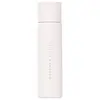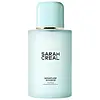What's inside
What's inside
 Key Ingredients
Key Ingredients

 Benefits
Benefits

 Concerns
Concerns

 Ingredients Side-by-side
Ingredients Side-by-side

Water
Skin ConditioningGlycerin
HumectantPentylene Glycol
Skin ConditioningNiacinamide
SmoothingButylene Glycol
HumectantMorinda Citrifolia Fruit Juice
Skin ConditioningCaprylic/Capric Triglyceride
MaskingPropanediol
SolventLactobacillus Ferment
Skin ConditioningGlyceryl Caprylate
EmollientPolyglyceryl-10 Distearate
EmulsifyingGlyceryl Stearate
EmollientXanthan Gum
EmulsifyingStearic Acid
CleansingSorbitan Stearate
EmulsifyingSclerotium Gum
Emulsion StabilisingLecithin
EmollientPullulan
Saccharomyces Cerevisiae Extract
Skin ConditioningOpuntia Ficus-Indica Fruit Extract
Skin ConditioningCamellia Sinensis Leaf Extract
AntimicrobialArginine
MaskingAdenosine
Skin ConditioningSodium Acetylated Hyaluronate
HumectantSodium Hyaluronate
HumectantPhenoxyethanol
PreservativeCystoseira Tamariscifolia Extract
Skin ConditioningSodium Hyaluronate Crosspolymer
HumectantGlutamine
Skin ConditioningAscorbyl Glucoside
AntioxidantMaltodextrin
AbsorbentOlive Glycerides
EmulsifyingCaprylyl Glycol
EmollientSodium Benzoate
MaskingSilica
AbrasivePotassium Sorbate
PreservativeHydrolyzed Sodium Hyaluronate
Skin ConditioningBiotinoyl Hexapeptide-2 Amide
Skin ConditioningBeta-Glucan
Skin ConditioningPCA
HumectantMyristyl Alcohol
EmollientCeramide NP
Skin ConditioningEthylhexylglycerin
Skin ConditioningGluconolactone
Skin ConditioningTitanium Dioxide
Cosmetic ColorantMica
Cosmetic ColorantSwertia Chirata Extract
HumectantPolygonum Cuspidatum Root Extract
AntioxidantCalcium Gluconate
HumectantTin Oxide
AbrasiveWater, Glycerin, Pentylene Glycol, Niacinamide, Butylene Glycol, Morinda Citrifolia Fruit Juice, Caprylic/Capric Triglyceride, Propanediol, Lactobacillus Ferment, Glyceryl Caprylate, Polyglyceryl-10 Distearate, Glyceryl Stearate, Xanthan Gum, Stearic Acid, Sorbitan Stearate, Sclerotium Gum, Lecithin, Pullulan, Saccharomyces Cerevisiae Extract, Opuntia Ficus-Indica Fruit Extract, Camellia Sinensis Leaf Extract, Arginine, Adenosine, Sodium Acetylated Hyaluronate, Sodium Hyaluronate, Phenoxyethanol, Cystoseira Tamariscifolia Extract, Sodium Hyaluronate Crosspolymer, Glutamine, Ascorbyl Glucoside, Maltodextrin, Olive Glycerides, Caprylyl Glycol, Sodium Benzoate, Silica, Potassium Sorbate, Hydrolyzed Sodium Hyaluronate, Biotinoyl Hexapeptide-2 Amide, Beta-Glucan, PCA, Myristyl Alcohol, Ceramide NP, Ethylhexylglycerin, Gluconolactone, Titanium Dioxide, Mica, Swertia Chirata Extract, Polygonum Cuspidatum Root Extract, Calcium Gluconate, Tin Oxide
Water
Skin ConditioningSqualane
EmollientEthylhexyl Palmitate
EmollientGlycerin
HumectantButylene Glycol
HumectantNiacinamide
SmoothingPentylene Glycol
Skin ConditioningGluconolactone
Skin ConditioningXylitylglucoside
HumectantSodium PCA
HumectantNicotiana Benthamiana Hexapeptide-40 Sh-Polypeptide-2
Skin ConditioningSodium Hyaluronate
HumectantAnhydroxylitol
HumectantHydroxypropyltrimonium Hyaluronate
Hydroxyacetophenone
AntioxidantXylitol
HumectantHeptyl Glucoside
Sodium Benzoate
MaskingSodium Hydroxide
BufferingSodium Citrate
BufferingCitric Acid
BufferingSilica Dimethyl Silylate
EmollientGlucose
HumectantCalcium Gluconate
HumectantPhenoxyethanol
PreservativeWater, Squalane, Ethylhexyl Palmitate, Glycerin, Butylene Glycol, Niacinamide, Pentylene Glycol, Gluconolactone, Xylitylglucoside, Sodium PCA, Nicotiana Benthamiana Hexapeptide-40 Sh-Polypeptide-2, Sodium Hyaluronate, Anhydroxylitol, Hydroxypropyltrimonium Hyaluronate, Hydroxyacetophenone, Xylitol, Heptyl Glucoside, Sodium Benzoate, Sodium Hydroxide, Sodium Citrate, Citric Acid, Silica Dimethyl Silylate, Glucose, Calcium Gluconate, Phenoxyethanol
Ingredients Explained
These ingredients are found in both products.
Ingredients higher up in an ingredient list are typically present in a larger amount.
Butylene Glycol (or BG) is used within cosmetic products for a few different reasons:
Overall, Butylene Glycol is a safe and well-rounded ingredient that works well with other ingredients.
Though this ingredient works well with most skin types, some people with sensitive skin may experience a reaction such as allergic rashes, closed comedones, or itchiness.
Learn more about Butylene GlycolThis ingredient is calcium salt of gluconic acid. It is a humectant, meaning it attracts water to your skin.
Gluconolactone is a PHA. PHAs are a great gentle alternative to traditional AHAs.
When applied, Gluconolactone has the same affect on skin as AHAs such as lactic acid. It helps dissolve the dead skin cells in the top layer of your skin. This improves texture and brightens the skin.
PHAs are more gentle than AHAs due to their larger structure. They do not penetrate as deeply as AHAs and take a longer time to dissolve dead cells. Studies show PHAs do not cause as much irritation.
Gluconolactone has some interesting properties:
In a 2004 study, Gluconolactone was found to prevent UV damage in mouse skin cells and has not been found to increase sun sensitivity. However, we still recommend wearing SPF daily.
This ingredient is is an created by reacting gluconic acid with an alcohol.
Learn more about GluconolactoneGlycerin is already naturally found in your skin. It helps moisturize and protect your skin.
A study from 2016 found glycerin to be more effective as a humectant than AHAs and hyaluronic acid.
As a humectant, it helps the skin stay hydrated by pulling moisture to your skin. The low molecular weight of glycerin allows it to pull moisture into the deeper layers of your skin.
Hydrated skin improves your skin barrier; Your skin barrier helps protect against irritants and bacteria.
Glycerin has also been found to have antimicrobial and antiviral properties. Due to these properties, glycerin is often used in wound and burn treatments.
In cosmetics, glycerin is usually derived from plants such as soybean or palm. However, it can also be sourced from animals, such as tallow or animal fat.
This ingredient is organic, colorless, odorless, and non-toxic.
Glycerin is the name for this ingredient in American English. British English uses Glycerol/Glycerine.
Learn more about GlycerinNiacinamide is a multitasking form of vitamin B3 that strengthens the skin barrier, reduces pores and dark spots, regulates oil, and improves signs of aging.
And the best part? It's gentle and well-tolerated by most skin types, including sensitive and reactive skin.
You might have heard of "niacin flush", or the reddening of skin that causes itchiness. Niacinamide has not been found to cause this.
In very rare cases, some individuals may not be able to tolerate niacinamide at all or experience an allergic reaction to it.
If you are experiencing flaking, irritation, and dryness with this ingredient, be sure to double check all your products as this ingredient can be found in all categories of skincare.
When incorporating niacinamide into your routine, look out for concentration amounts. Typically, 5% niacinamide provides benefits such as fading dark spots. However, if you have sensitive skin, it is better to begin with a smaller concentration.
When you apply niacinamide to your skin, your body converts it into nicotinamide adenine dinucleotide (NAD). NAD is an essential coenzyme that is already found in your cells as "fuel" and powers countless biological processes.
In your skin, NAD helps repair cell damage, produce new healthy cells, support collagen production, strengthen the skin barrier, and fight environmental stressors (like UV and pollution).
Our natural NAD levels start to decline with age, leading to slower skin repair, visible aging, and a weaker skin barrier. By providing your skin niacinamide, you're recharging your skin's NAD levels. This leads to stronger, healthier, and younger looking skin.
Another name for vitamin B3 is nicotinamide. This vitamin is water-soluble and our bodies don't store it. We obtain Vitamin B3 from either food or skincare. Meat, fish, wheat, yeast, and leafy greens contain vitamin B3.
The type of niacinamide used in skincare is synthetically created.
Learn more about NiacinamidePentylene glycol is typically used within a product to thicken it. It also adds a smooth, soft, and moisturizing feel to the product. It is naturally found in plants such as sugar beets.
The hydrophilic trait of Pentylene Glycol makes it a humectant. As a humectant, Pentylene Glycol helps draw moisture from the air to your skin. This can help keep your skin hydrated.
This property also makes Pentylene Glycol a great texture enhancer. It can also help thicken or stabilize a product.
Pentylene Glycol also acts as a mild preservative and helps to keep a product microbe-free.
Some people may experience mild eye and skin irritation from Pentylene Glycol. We always recommend speaking with a professional about using this ingredient in your routine.
Pentylene Glycol has a low molecular weight and is part of the 1,2-glycol family.
Learn more about Pentylene GlycolPhenoxyethanol is a preservative that has germicide, antimicrobial, and aromatic properties. Studies show that phenoxyethanol can prevent microbial growth. By itself, it has a scent that is similar to that of a rose.
It's often used in formulations along with Caprylyl Glycol to preserve the shelf life of products.
Sodium Benzoate is a preservative. It's used in both cosmetic and food products to inhibit the growth of mold and bacteria. It is typically produced synthetically.
Both the US FDA and EU Health Committee have approved the use of sodium benzoate. In the US, levels of 0.1% (of the total product) are allowed.
Sodium benzoate works as a preservative by inhibiting the growth of bacteria inside of cells. It prevents the cell from fermenting a type of sugar using an enzyme called phosphofructokinase.
It is the salt of benzoic acid. Foods containing sodium benzoate include soda, salad dressings, condiments, fruit juices, wines, and snack foods.
Studies for using ascorbic acid and sodium benzoate in cosmetics are lacking, especially in skincare routines with multiple steps.
We always recommend speaking with a professional, such as a dermatologist, if you have any concerns.
Learn more about Sodium BenzoateSodium Hyaluronate is hyaluronic acid's salt form. It is commonly derived from the sodium salt of hyaluronic acid.
Like hyaluronic acid, it is great at holding water and acts as a humectant. This makes it a great skin hydrating ingredient.
Sodium Hyaluronate is naturally occurring in our bodies and is mostly found in eye fluid and joints.
These are some other common types of Hyaluronic Acid:
Learn more about Sodium HyaluronateWater. It's the most common cosmetic ingredient of all. You'll usually see it at the top of ingredient lists, meaning that it makes up the largest part of the product.
So why is it so popular? Water most often acts as a solvent - this means that it helps dissolve other ingredients into the formulation.
You'll also recognize water as that liquid we all need to stay alive. If you see this, drink a glass of water. Stay hydrated!
Learn more about Water